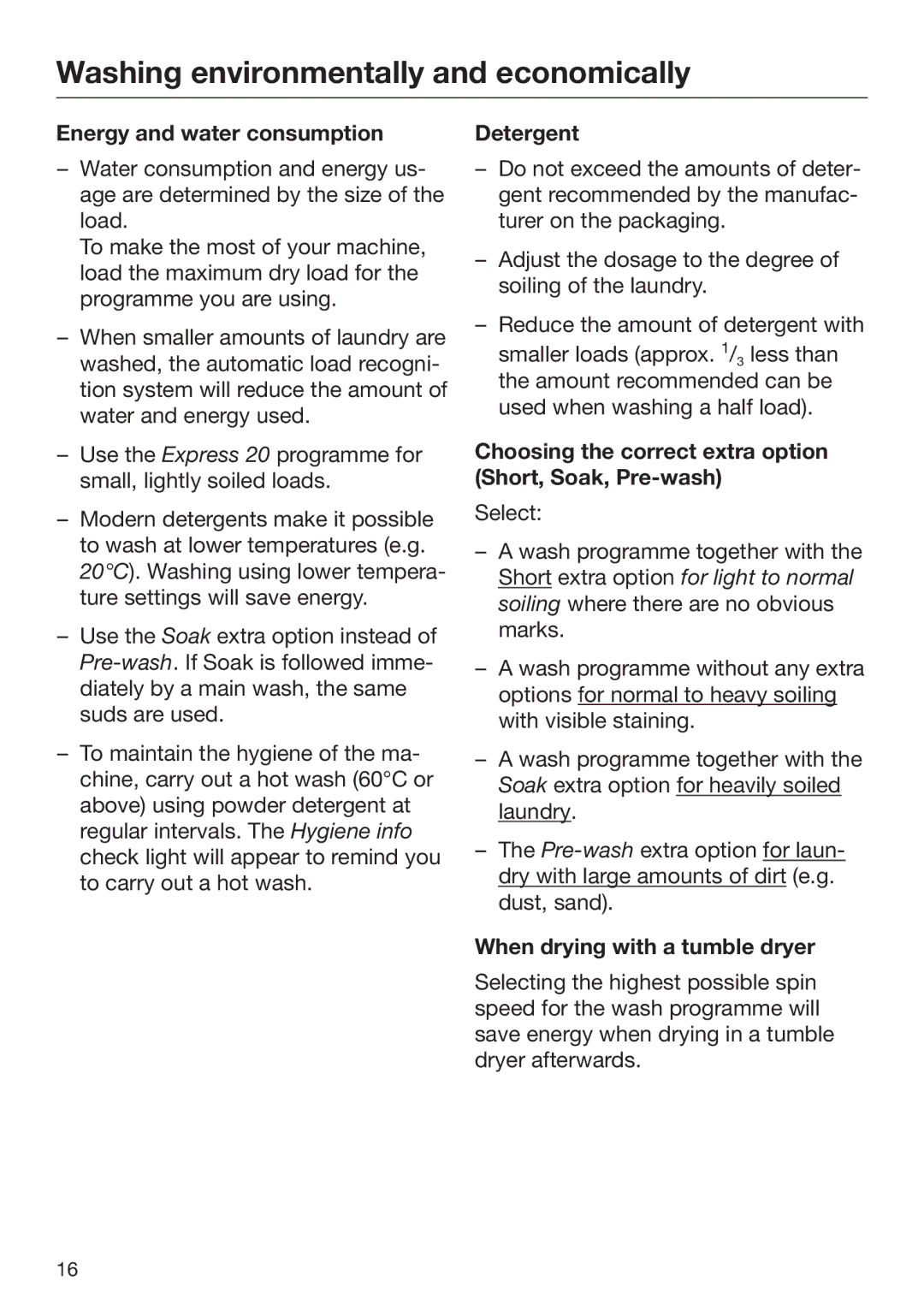09 900 690 specifications
The Miele 09 900 690 is a high-end laundry detergent designed specifically for Miele washing machines, delivering optimal cleaning performance while being gentle on fabrics. This product is engineered to meet the rigorous demands of modern laundry, providing a comprehensive solution for all types of textiles.One of the main features of the Miele 09 900 690 is its formulation, which is tailored for both delicate and robust fabrics. The detergent effectively removes tough stains while preserving the integrity of the colors and textures of the garments. This is particularly important for households that frequently wash a wide variety of clothing, from everyday wear to delicate fabrics like silk and wool.
The technology behind the Miele 09 900 690 includes advanced stain removal agents that penetrate deep into the fabric fibers. This ensures a thorough cleaning action that is effective even in lower temperature settings, making it a great choice for energy-conscious consumers. The enzyme-based formula also assists in breaking down protein-based stains such as grass, blood, and sweat, offering versatility across different laundry needs.
Another characteristic of this detergent is its eco-friendly formulation. Miele places a strong emphasis on sustainability, and the 09 900 690 is no exception. It is designed to minimize environmental impact while still providing powerful cleaning capabilities. The product is phosphate-free, reducing the risk of water pollution, and comes in recyclable packaging, promoting a greater commitment to ecological responsibility.
Users of the Miele 09 900 690 often praise its compatibility with Miele washers, as it is formulated to work seamlessly with the brand's washing technologies. This synergy means that Miele users can expect optimized performance, with the detergent activating at the right moments during the wash cycle for enhanced results.
In summary, the Miele 09 900 690 stands out as a premium laundry detergent characterized by its specialized stain-fighting abilities, gentle care for various fabrics, eco-friendly ingredients, and compatibility with Miele appliances. This detergent not only cleans effectively but also aligns with the values of environmentally conscious consumers, making it an excellent choice for modern households looking for quality laundry solutions.
